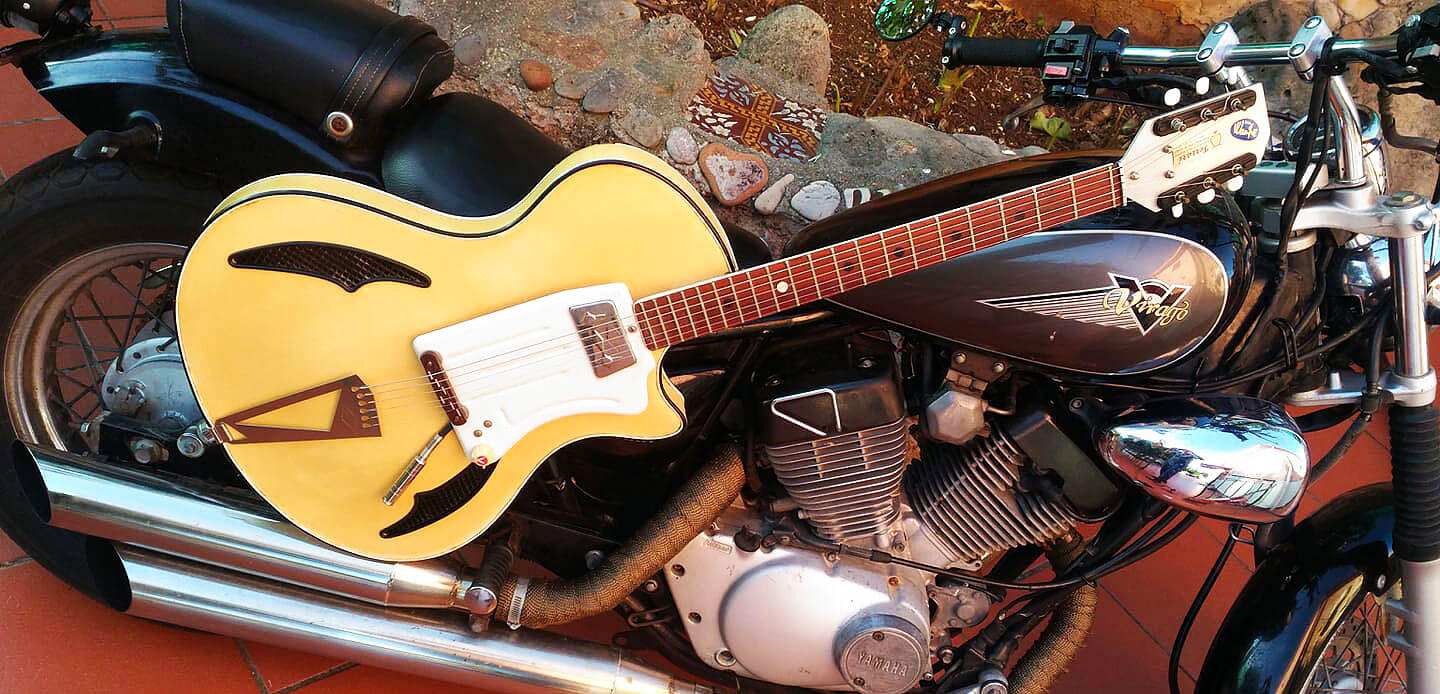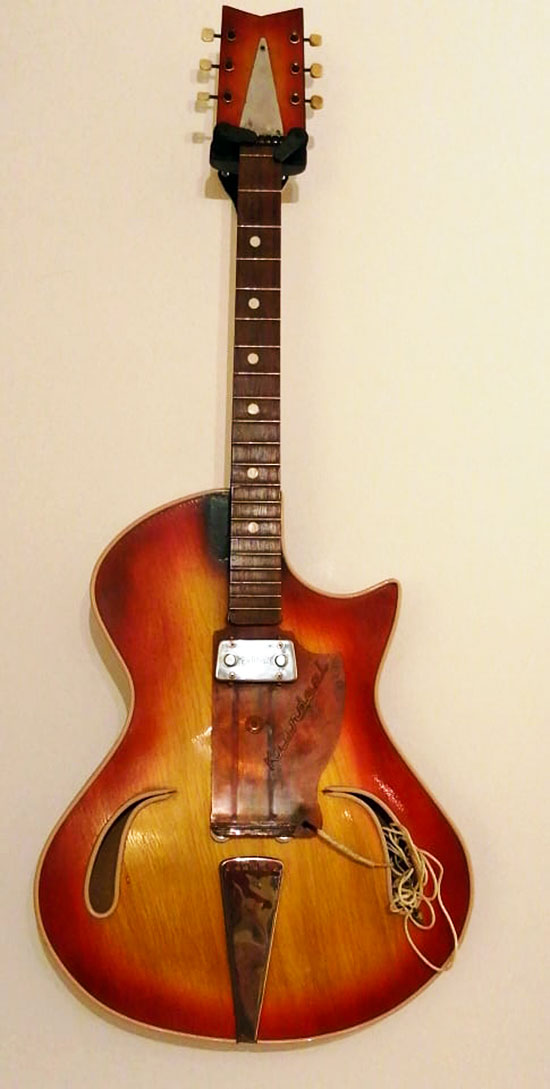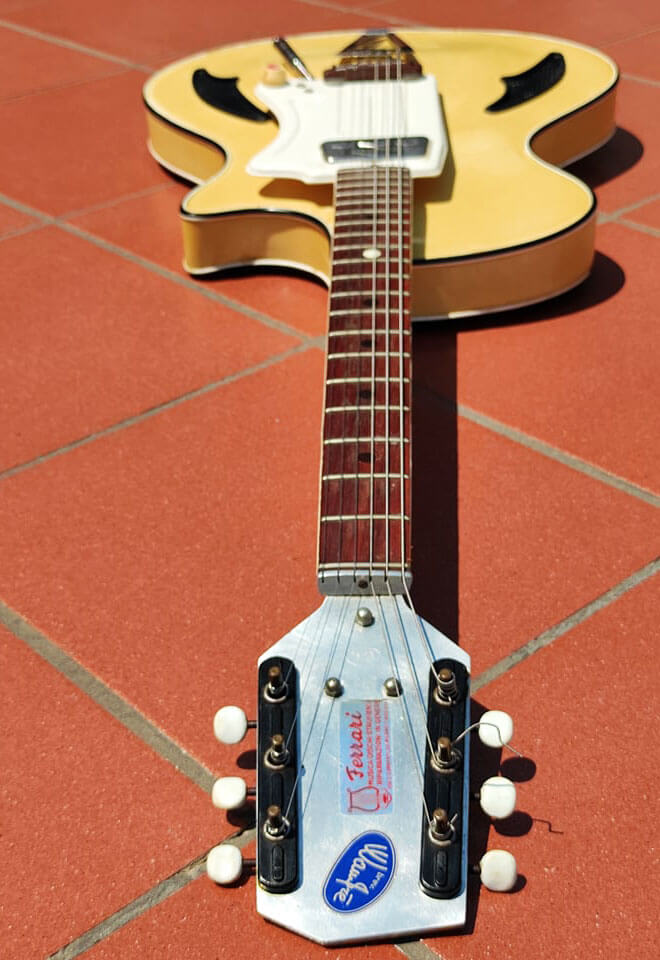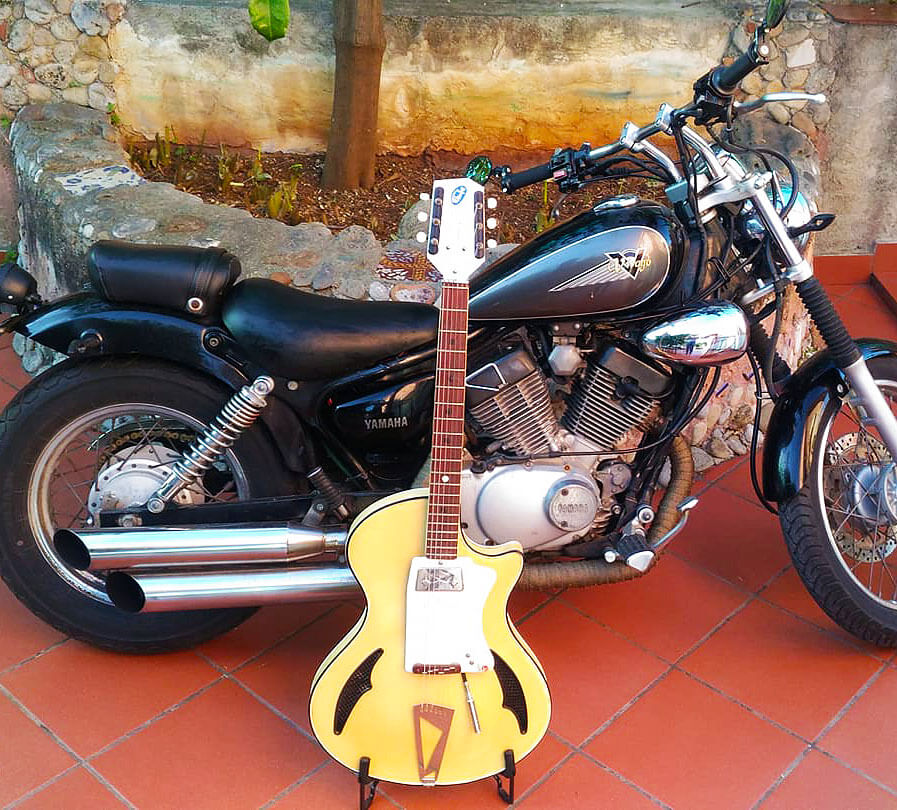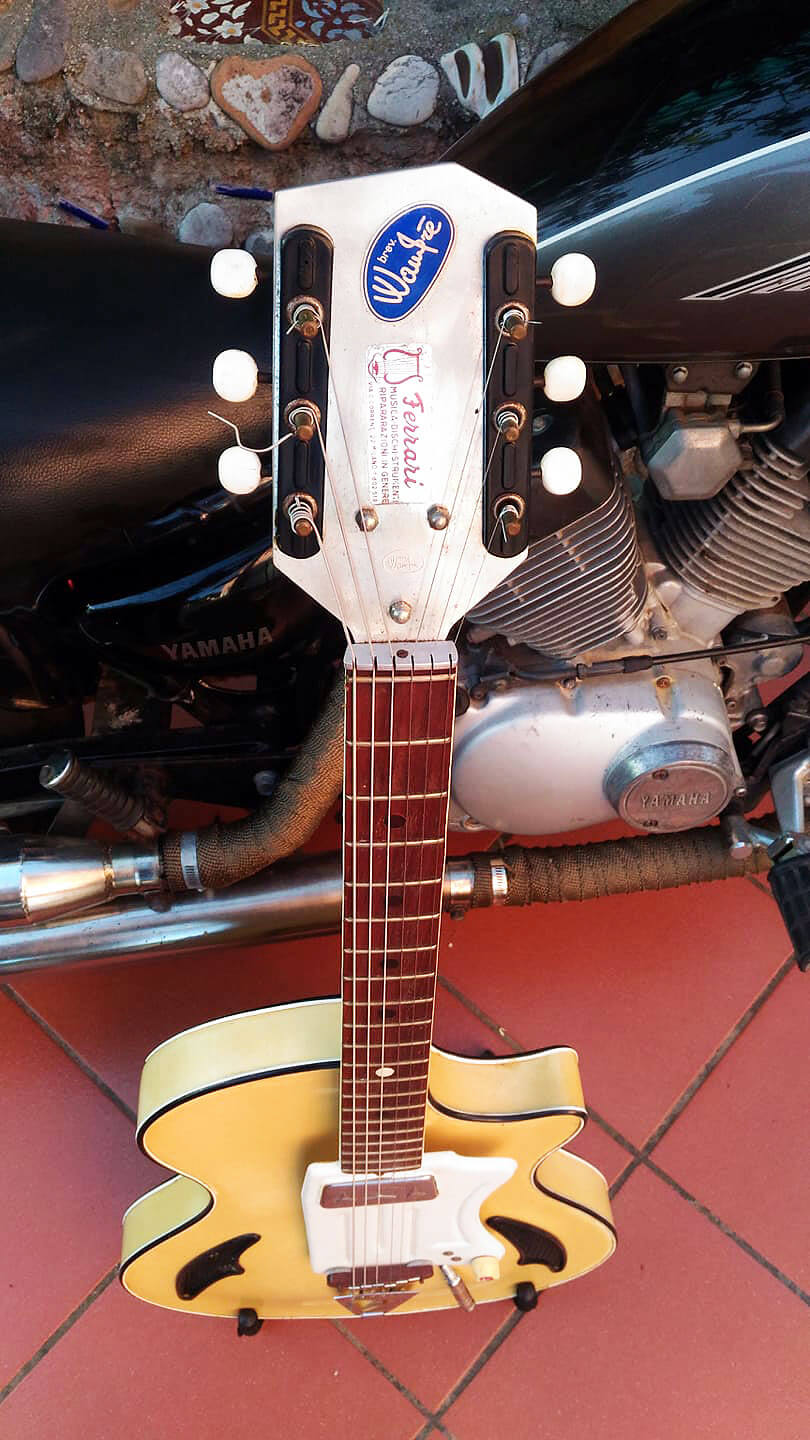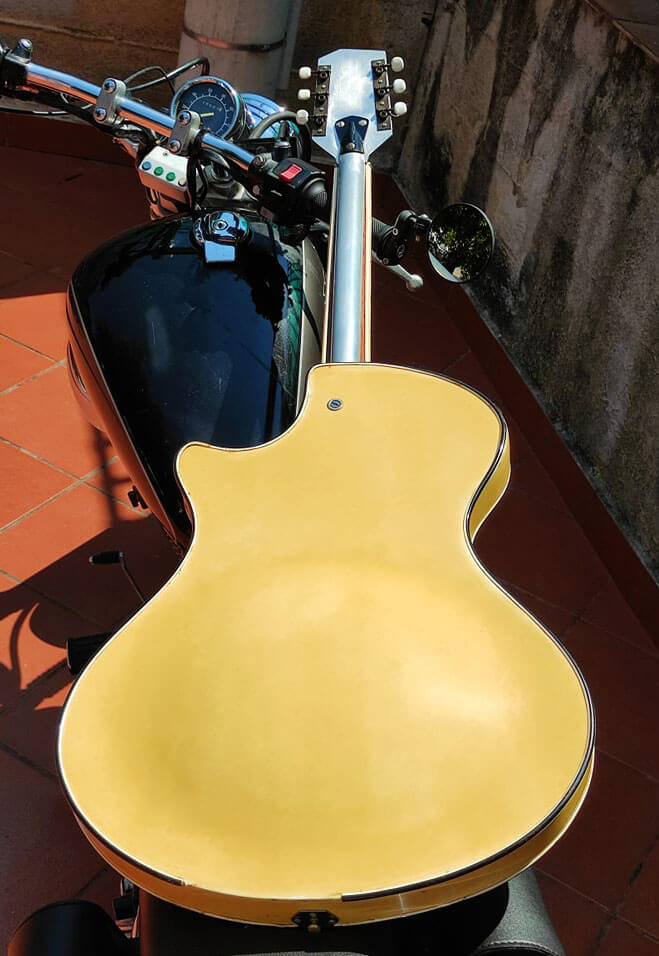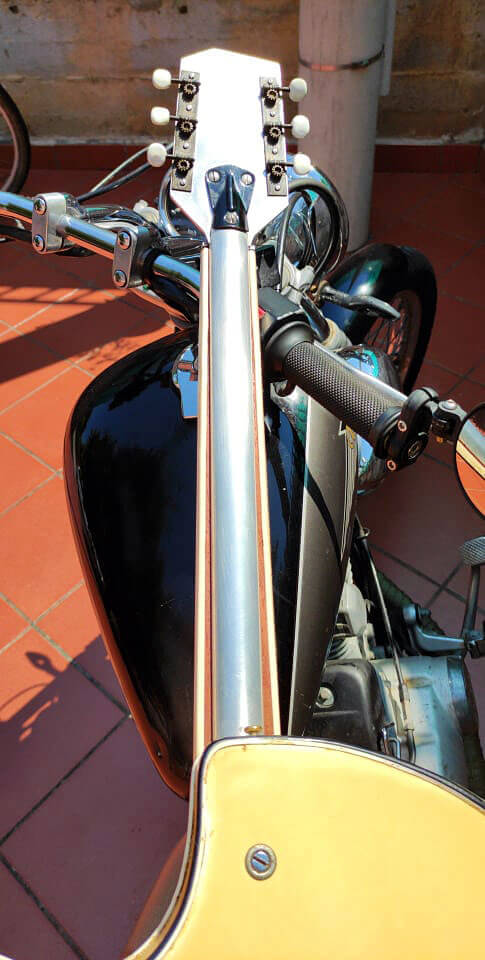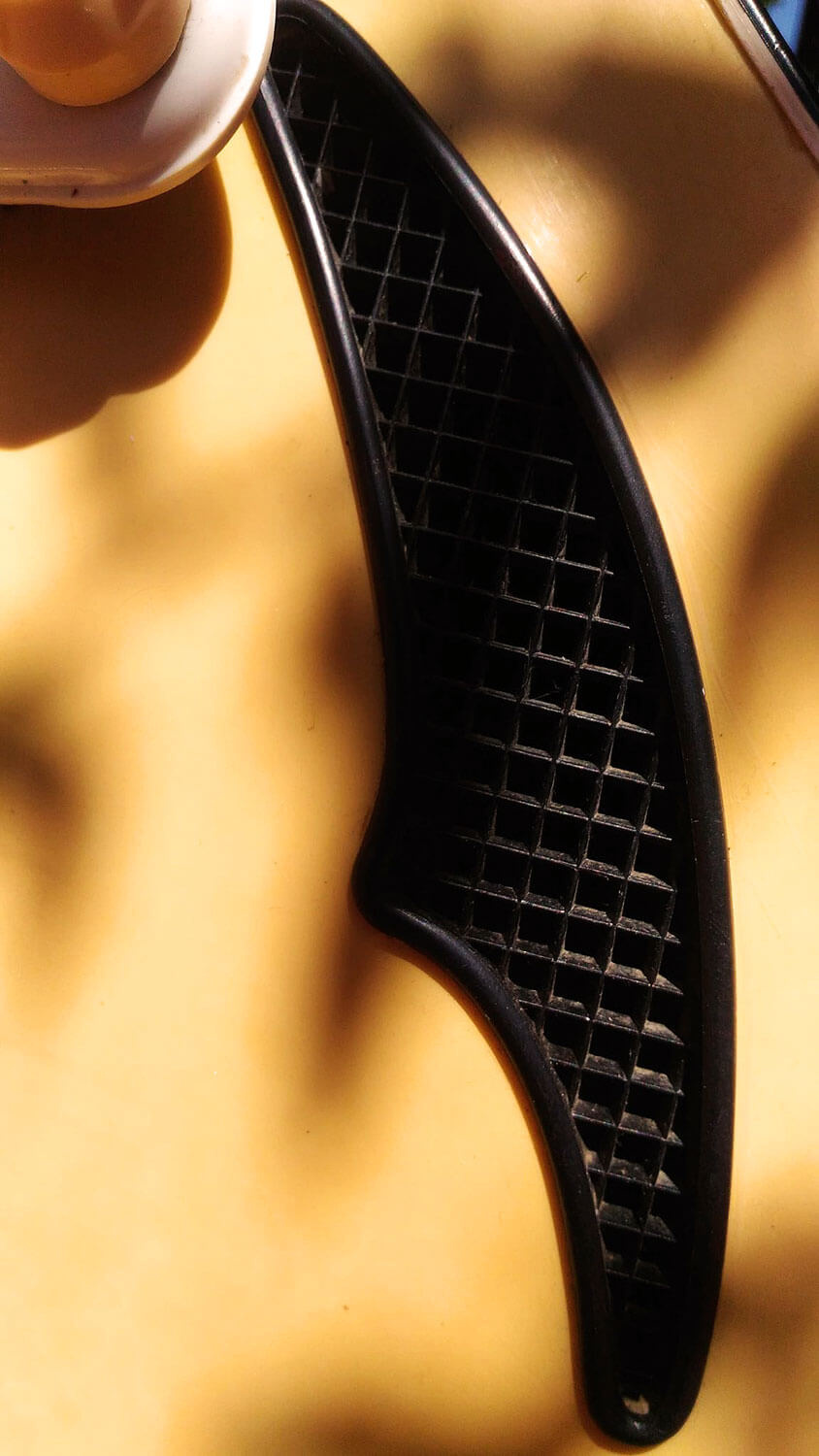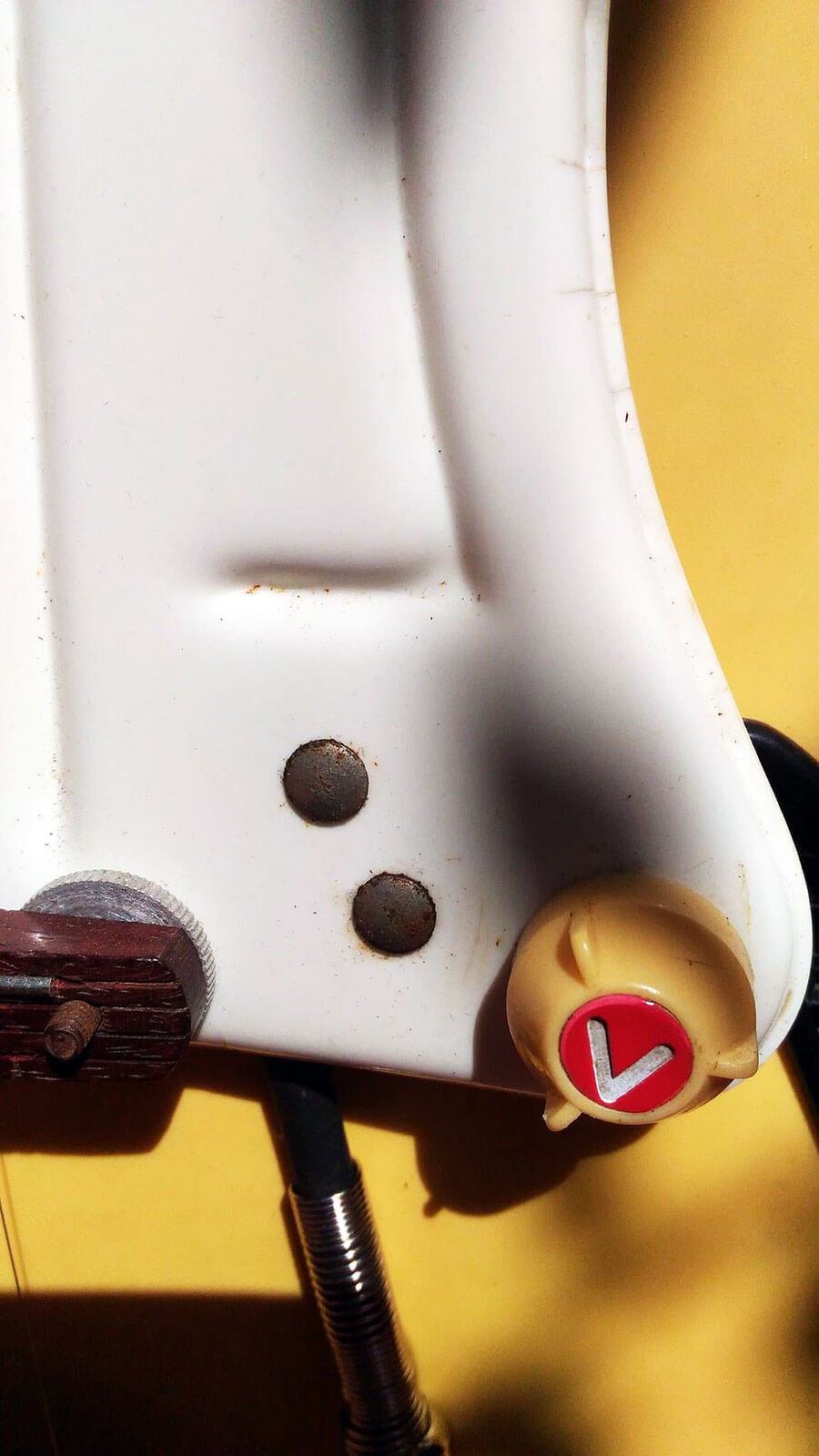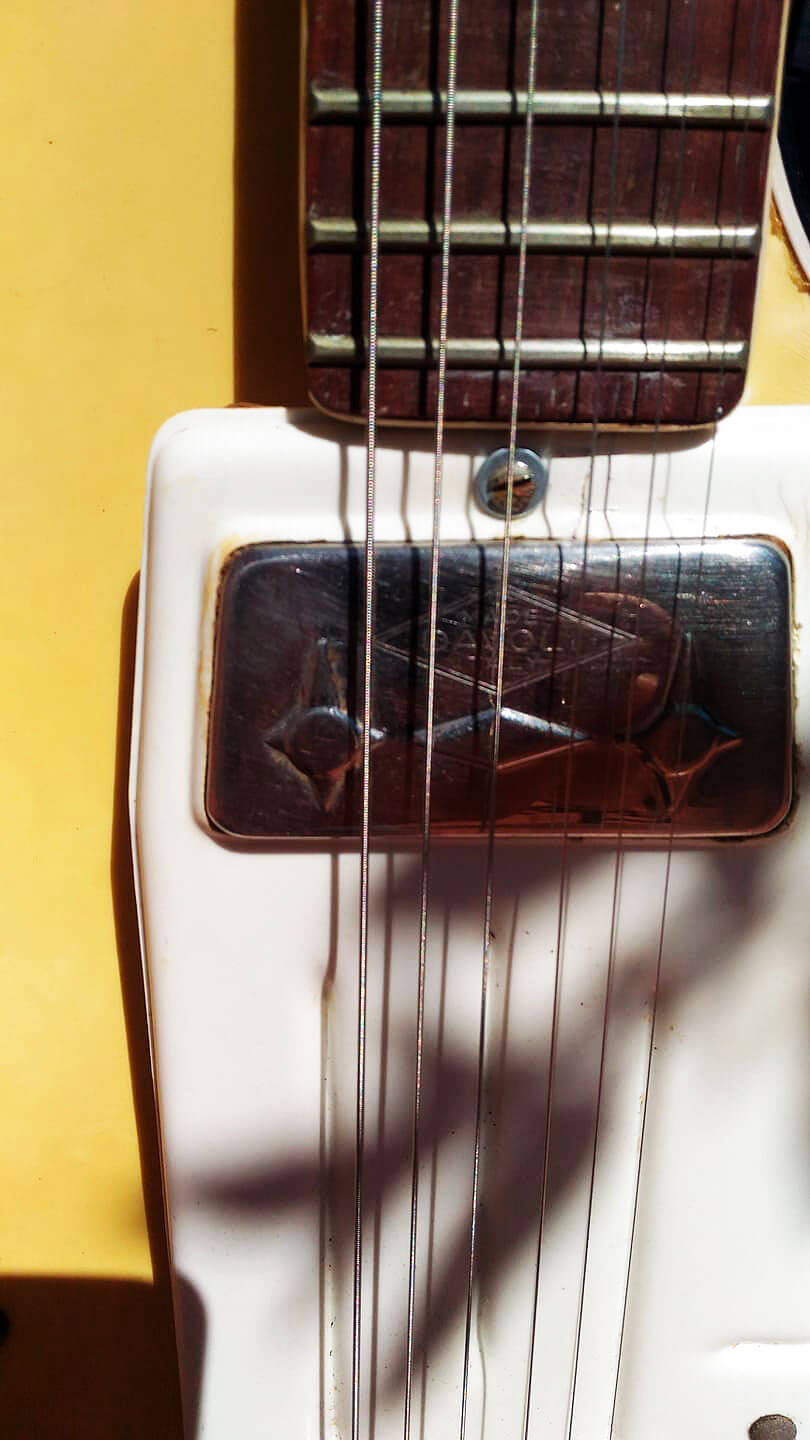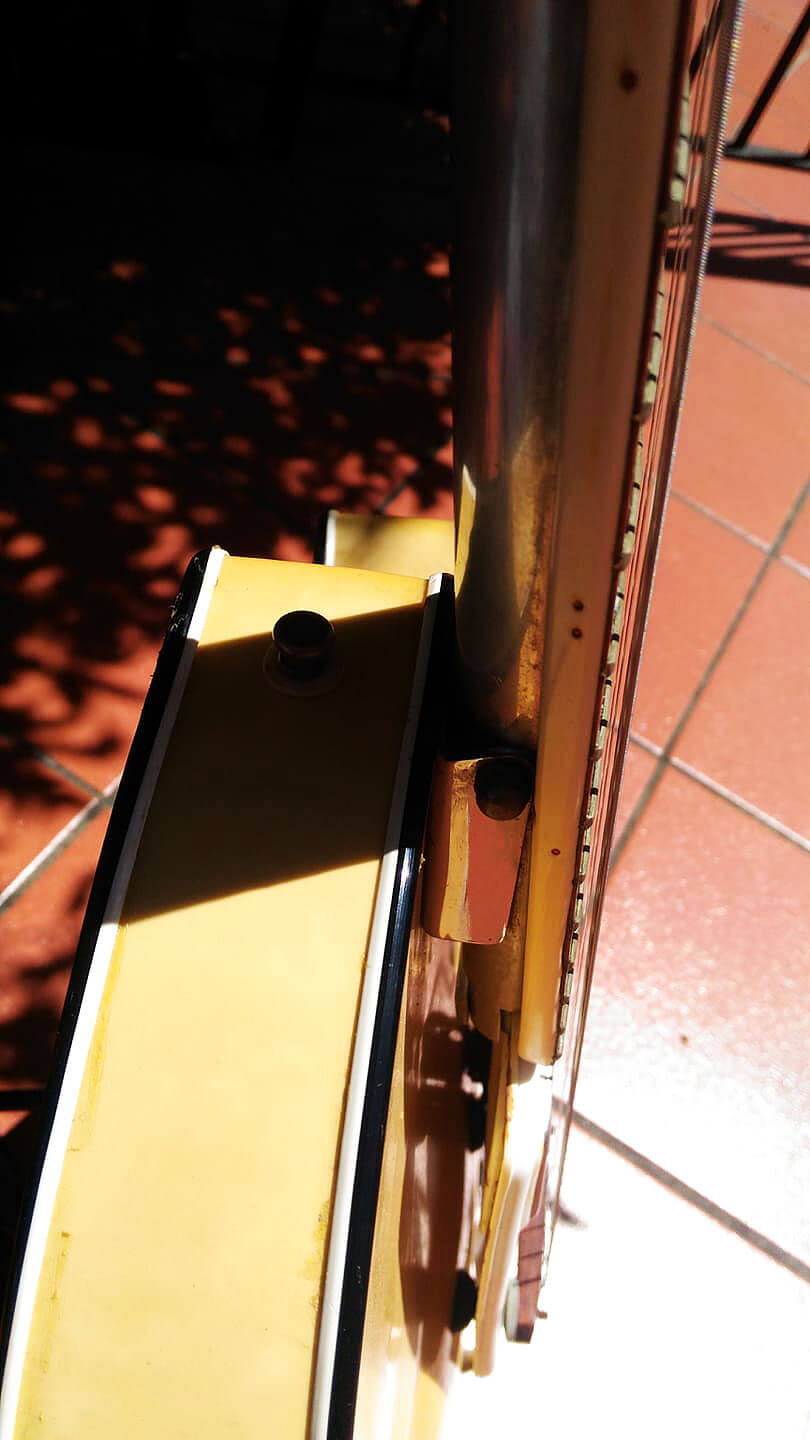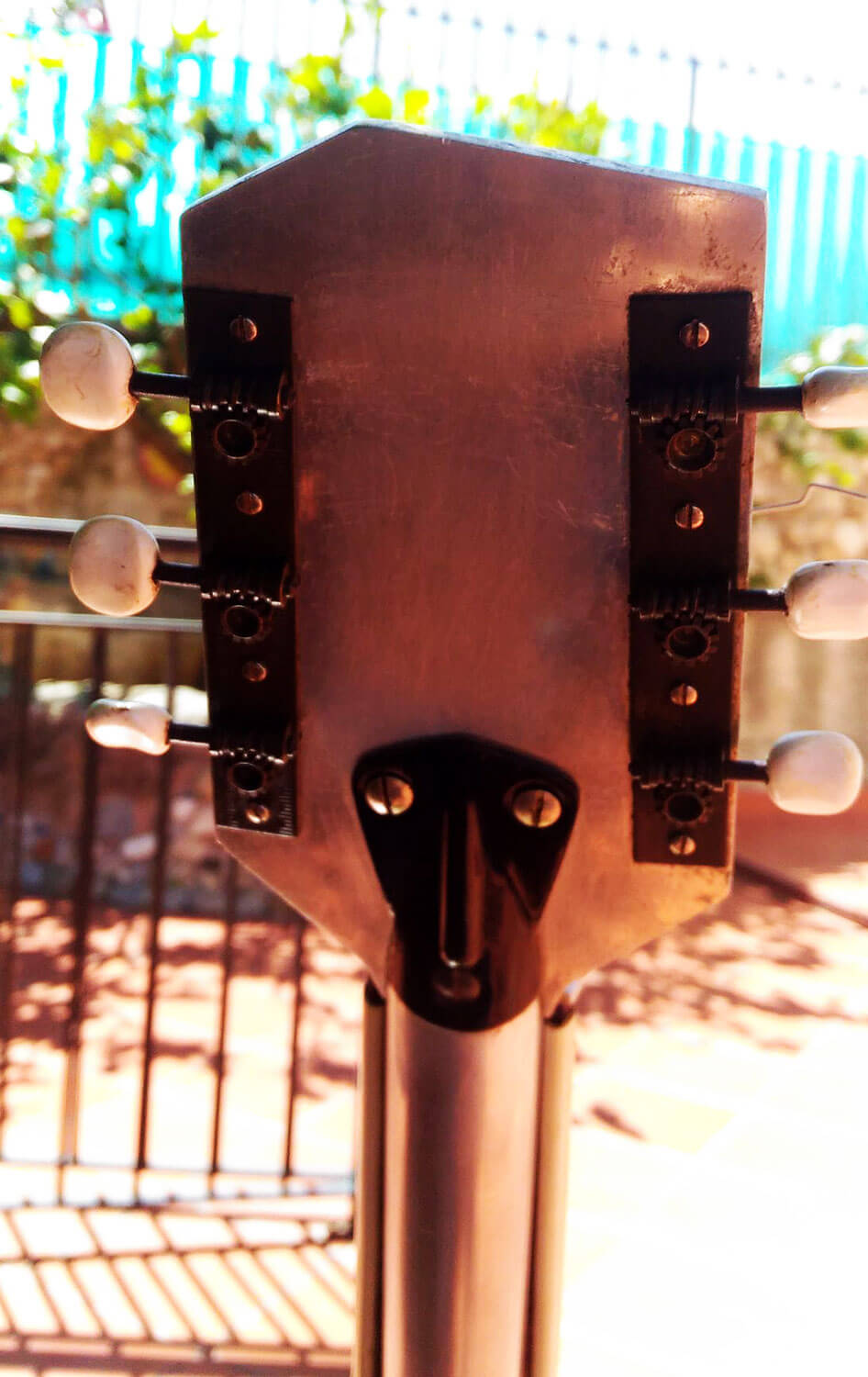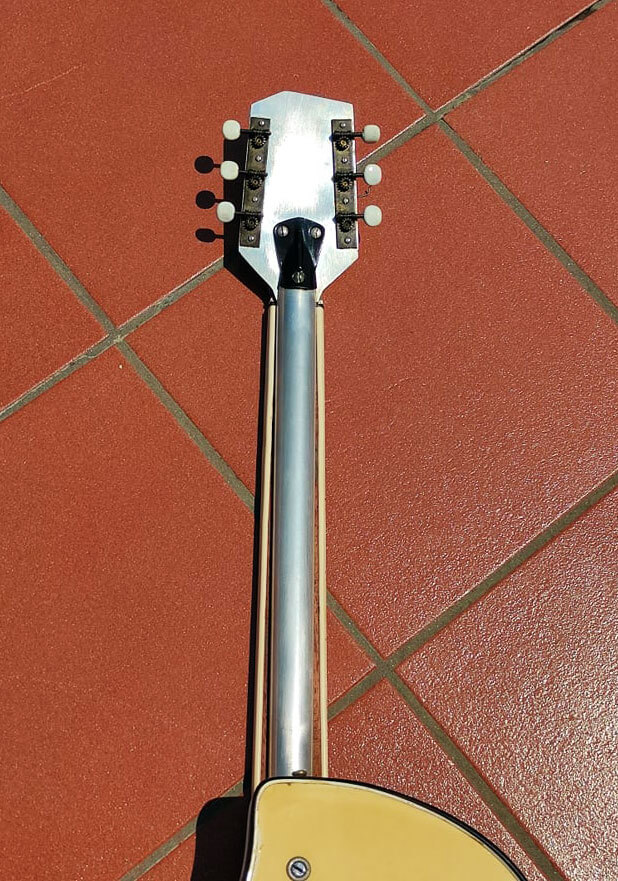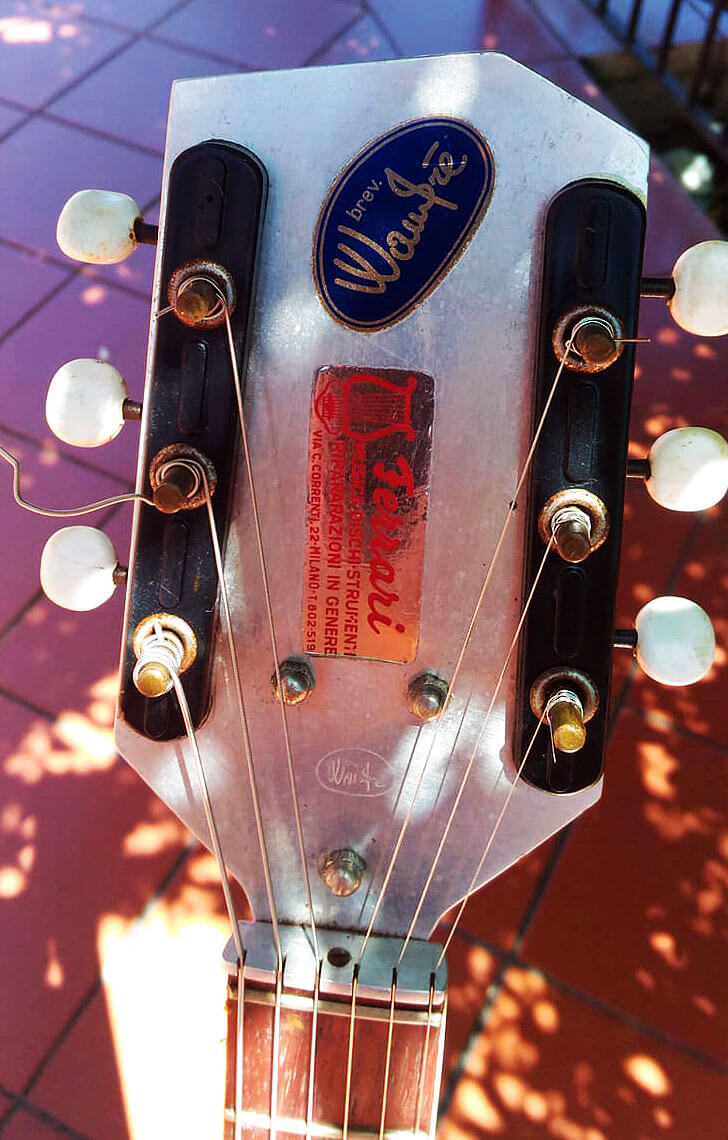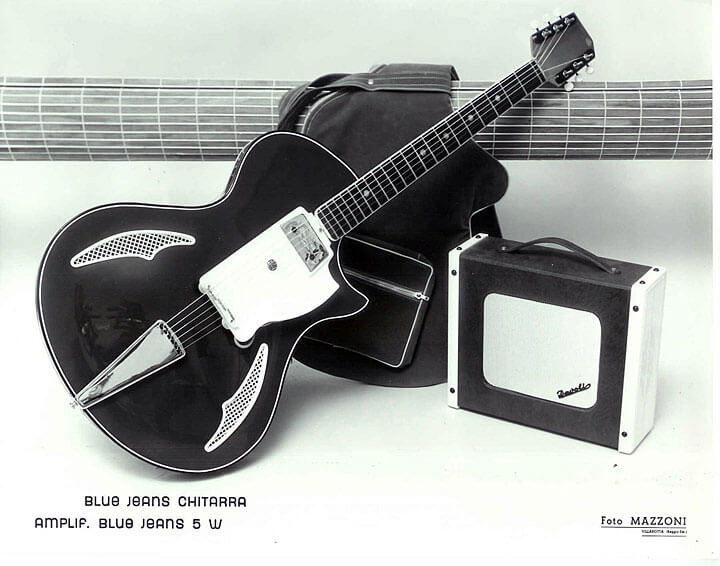”Today we have a splendid Wandrè Blue Jeans owned by the collector Renato Cavallaro.
Lorenzo
The Blue Jeans, as the name suggests, was born as an economic guitar dedicated to young beginners or amateurs.
Most likely predating her sister Piper, the B.J. it will then be renamed Teenager, to highlight even more its being destined mainly to that slice of the market.
The main difference with the Piper is the Florentine cutaway, which lightens the silhouette, making it even more provocative and modern, a modern classic like blue jeans, we could say.
To make the BJ cheaper, it was decided to use a wooden neck instead of aluminum, and (at the suggestion of Athos Davoli) the abolition of all non-essential elements such as the jack socket, which was replaced with an attached cable to the pickguard.
The price was thus settled at 18,000 lire for the guitar and 34,000 for the 4-5 watt guitar + amplifier set.
Through various modifications, the Blue Jeans remained in production from 1958-59 until 1967, making it the most popular and best-selling model of the Wandrè production.
Over the years, the B.J. will undergo several changes, including some very rare versions such as the very first samples with wooden neck with a particular trefoil section, those with sound holes with a curious shape reminiscent of the camel’s hoof, those without sound holes and with 3 pick-ups.
In 1961 the Nuova B.J. and the B.J. Major were born.
The first has a neck with a “non-deformable metalcore, adjustable (Wandrè patent)” and polyester paint.
The Major instead has an aluminum neck with a welded aluminum headstock. The aforementioned neck is fixed to the body by means of a tilting device that allows fine adjustment of the neck-chest angle and consequently of the action.
Further additions were the height-adjustable bridge, the curved top with a new shape of the sound holes, a new pickguard equipped with two pick-ups, volume and tone control and microphone jack output.
In the B.J. further modifications followed one after the other, such as the plexiglass pickguard, the neck-thru neck, the different shape of the harmonic holes and even their disappearance.
The name Tri-Lam is instead improper and derives from the tri-lamellar plywood with which the B.J. was manufactured, like also most of the other Wandrè models.
For more information, please refer to the excellent book written by Wandré’s leading expert, Dr. Marco Ballestri: “Wandré – L’artista della chitarra elettrica” .
… but how does it sound?
Click the button and listen to the sound of the Blue Jeans from the fingers of the great Mario Evangelista.
Overview of the wonderful Blue Jeans owned by Renato Cavallaro
A review of a Wandrè Blue Jeans from our affiliate Fernando Temporão
Credits
We thank the Facebook group and our affiliate Wandré Guitars who, in the person of Dr. Marco Ballestri, kindly provided us with information and photographic material, as well as kind advice.
A dutiful thanks always go to the creator, that Wandré who left us a heritage of art and innovation that never fails to make us remain in amazed admiration.

